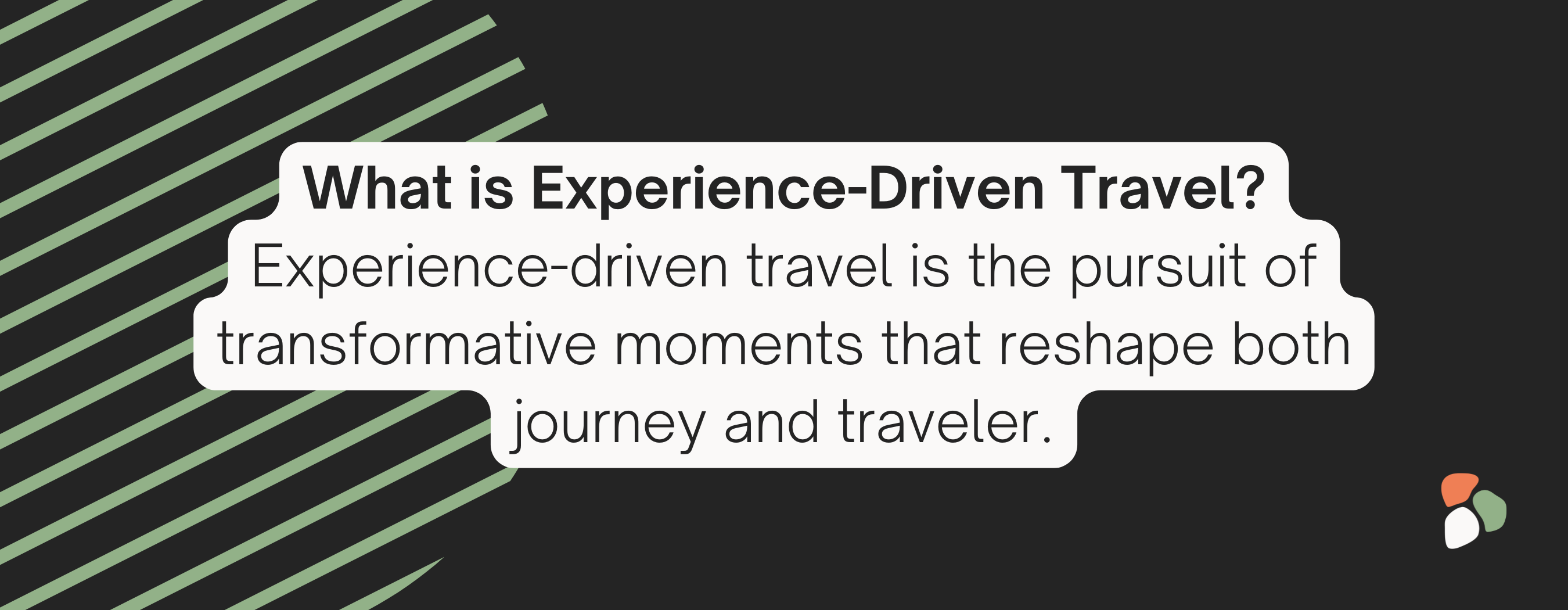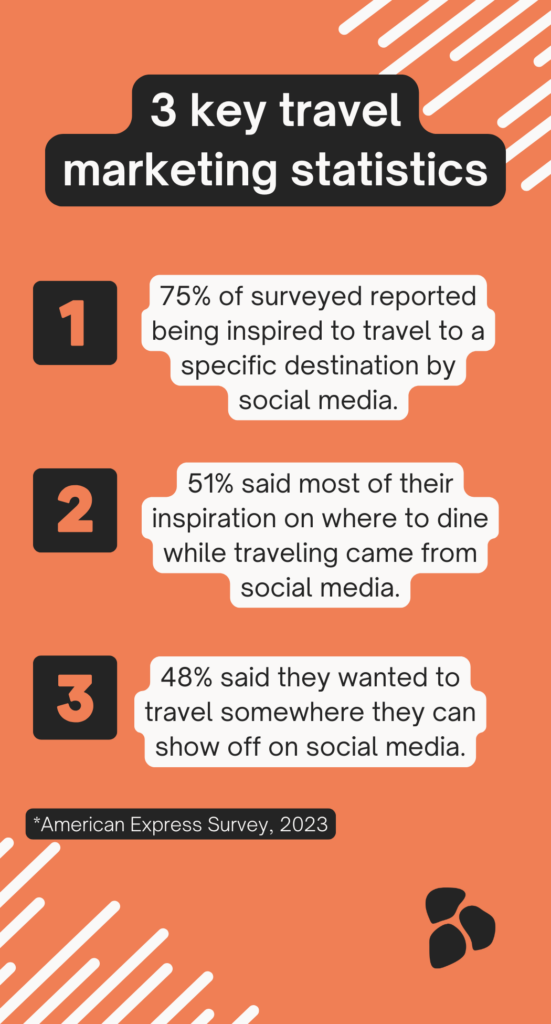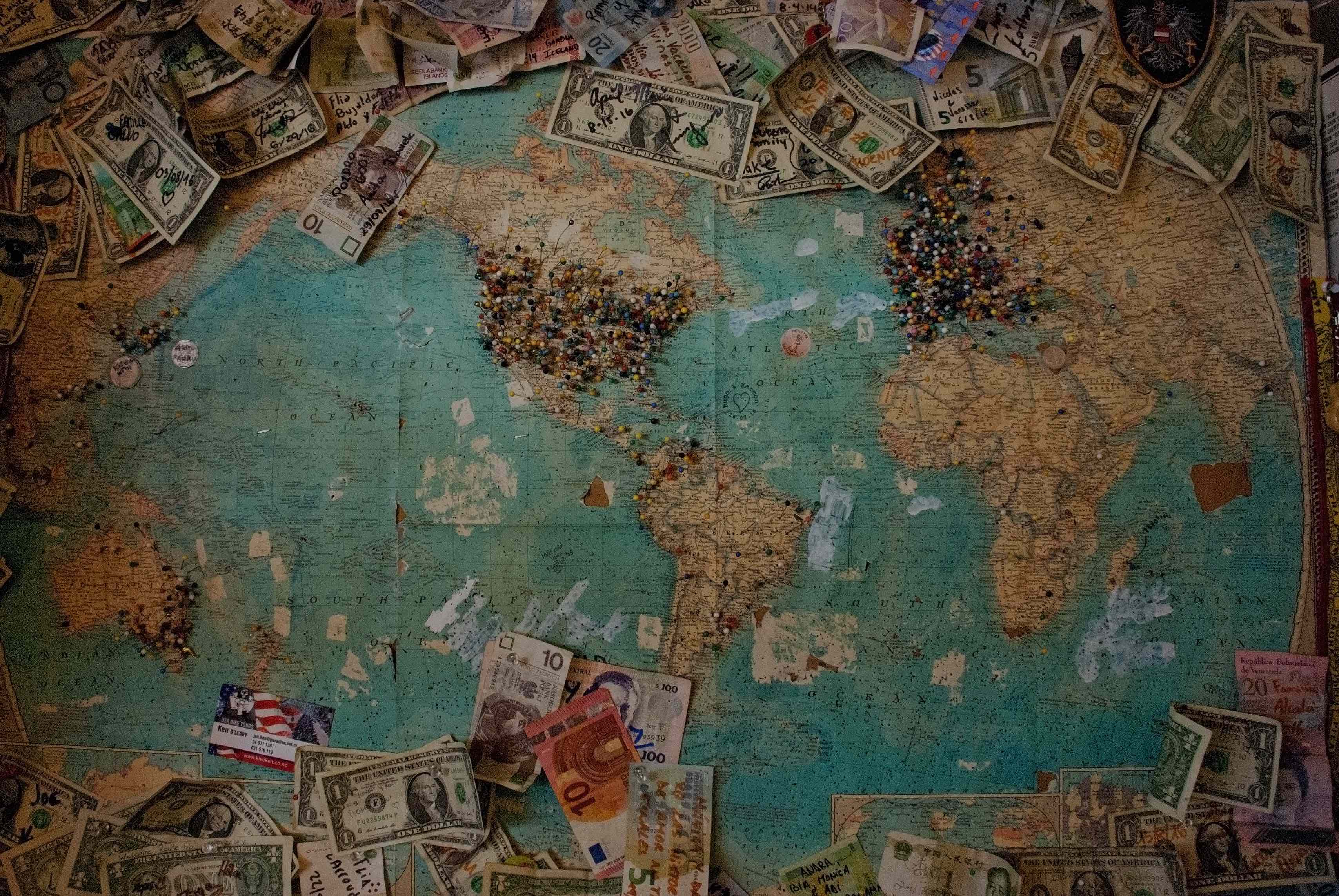Travel writer Pico Iyer once observed that "We travel, initially, to lose ourselves; and we travel, next to find ourselves."
Today's social media landscape has turned this philosophical musing into a marketing reality. The way travelers discover, dream about, and decide on their next destination has undergone a fundamental shift—and with it, the entire approach to travel marketing must evolve.

The shifting sands of travel marketing
The travel industry has undergone a seismic shift in recent years, transforming from a product-focused marketplace to an experience-driven ecosystem. Gone are the days when a stunning beach photo and a competitive price point were enough to fill your booking calendar. Today’s travelers seek something far more nuanced: transformative experiences that align with their values, enhance their personal narratives, and provide authentic connections with the destinations they visit.
For marketing leaders, this transformation demands a fundamental rethinking of our approach. The traditional marketing funnel, with its linear progression from awareness to purchase, no longer adequately captures the complexity of modern travel decision-making. Instead, we must embrace a more nuanced understanding of the traveler’s journey – one that recognizes the cyclical nature of travel inspiration, planning, and booking.
the experience economy: more than just a buzzword
When Joseph Pine and James Gilmore coined “The Experience Economy” in 1998, they identified a fundamental shift in consumer behavior that would come to define the travel industry. Their insight wasn’t just about the transition from services to experiences; it was about understanding the profound way in which modern consumers derive and express value.
This shift manifests most clearly in the way today’s travelers document and share their journeys. Nobody’s posting their new toaster on Instagram, but that sunrise yoga session in Bali? That’s going straight to the grid, complete with carefully curated filters and a caption that would make Hemingway proud. This behavior isn’t mere vanity – it’s a reflection of how deeply experiences have become intertwined with personal identity and social currency.

digital natives, analog desires
Perhaps the most fascinating paradox in modern travel marketing lies in the relationship between digital engagement and authentic experiences. We find ourselves using increasingly sophisticated digital tools to sell fundamentally analog experiences – a dichotomy that presents both challenges and opportunities for marketers.
Today’s travelers exist in a state of constant digital immersion, yet they’re desperately seeking opportunities to disconnect. They research extensively online before making travel decisions, all while yearning for “off-the-beaten-path” experiences.
This contradiction isn’t a problem to solve but rather a reality to embrace. The most successful travel marketers understand that digital channels aren’t just promotional platforms – they’re gateways to authentic experiences.
The art lies in using digital touchpoints to create anticipation for analog moments. Consider how a well-crafted social media campaign might showcase a candlelit dinner on a remote beach – the post itself is digital, but it triggers a deeply human desire for connection, romance, and escape.
The most sophisticated travel marketers have mastered this delicate balance, using digital platforms not to replace real-world experiences, but to heighten their anticipation and extend their memory. They understand that every tweet, post, or story should serve as a bridge between the traveler’s current digital reality and their desired analog escape.
understanding the modern traveler’s journey
The contemporary traveler’s path to purchase is anything but linear. Instead, it’s a complex web of touchpoints, influences, and micro-decisions that ultimately lead to booking. Understanding this journey is crucial for marketing leaders looking to optimise their strategies.
The dreaming phase, once triggered primarily by traditional advertising, now begins with a myriad of digital touchpoints – from social media posts to influencer content, from documentary series to user-generated reviews. This democratisation of travel inspiration has profound implications for how we structure our marketing efforts.
For marketing directors, this means developing an omnichannel presence that feels cohesive yet adapted to each platform’s unique characteristics. Your brand voice needs to remain consistent while speaking the native language of each channel – whether that’s the visual storytelling of Instagram, the rapid-fire engagement of TikTok, or the professional polish of LinkedIn.
the new content journey
Content strategy in travel marketing has evolved far beyond beautiful destination imagery. Today’s most effective content strategies are built around three core principles:
First, emotional resonance has become paramount. Content must tap into the deeper motivations that drive travel decisions – whether that’s the desire for cultural understanding, personal growth, or simply escape from the ordinary.
Second, authenticity must be woven into every piece of content. Modern travelers have developed a sophisticated ability to detect and reject overly polished, inauthentic marketing materials. This doesn’t mean abandoning professional production values; rather, it means finding ways to preserve and highlight the genuine character of destinations and experiences.
Third, content must be designed for discovery rather than interruption. The most successful travel marketing content doesn’t feel like marketing at all – it feels like a natural part of the traveler’s discovery process.

strategic imperatives for travel marketing
For CMOs and marketing directors navigating the evolving travel marketing landscape, the path forward requires a delicate balance of strategic thinking and tactical execution. The traditional playbook of demographic targeting and linear customer journeys no longer suffices in a world where travelers demand increasingly sophisticated, personalised experiences.
Success in this new era demands a fundamental shift in how we approach marketing strategy, moving beyond surface-level engagement to create deeper, more meaningful connections with our audience.
Key Strategic Priorities:
✓ Develop sophisticated audience understanding
- Move beyond basic demographic segmentation
- Map psychological drivers of travel decisions
- Build personas based on motivations and aspirations
- Understand emotional triggers at each journey stage
✓ Create a comprehensive content ecosystem
- Align content with each stage of the traveler journey
- Design for inspiration, planning, booking, and post-trip sharing
- Ensure each piece of content serves a clear strategic purpose
- Build narrative threads that connect across touchpoints
✓ Adopt a Human-First Approach
- Foster authentic user-generated content that tells real stories
- Showcase the personalities behind your brand
- Empower employee advocacy through personal travel storytelling
- Create behind-the-scenes content that reveals authentic moments
- Build community through shared experiences and stories
- Celebrate customer journeys through featured storytelling
- Develop ambassador programs that prioritise authenticity over reach
- Host in-person events that bring digital communities together
- Create opportunities for meaningful customer-to-customer connections
future-proofing your marketing strategy
Looking ahead, several emerging trends will shape the future of travel marketing. The rise of hybrid experiences – blending virtual and physical elements – is creating new opportunities for engagement before, during, and after travel. Community-centric marketing approaches are gaining prominence, recognising that modern travelers often identify as much with their fellow travelers as with destinations themselves.
For marketing leaders, this means developing strategies that are both robust and flexible. Your marketing infrastructure should be built to accommodate rapid shifts in consumer behavior while maintaining consistency in brand experience and message.
practical steps forward
Begin by auditing your current marketing ecosystem. Evaluate every touchpoint through the lens of emotional resonance and authenticity. Are you truly speaking to the deeper motivations of your target travelers, or are you still focused on features and amenities?
Next, assess your technology stack. Are your current tools enabling or hindering meaningful connections with travelers? Look for opportunities to automate routine tasks while enhancing human interaction where it matters most.
Finally, review your content strategy. Are you creating content that serves the entire traveler journey, or are you still focused primarily on the booking phase? Develop a content plan that addresses each stage of the journey with appropriate formats and messages.
want to discuss travel marketing?get more enquiries?grow brand awareness?collect more UGC?
final thoughts
As Mark Twain once noted, “Travel is fatal to prejudice, bigotry, and narrow-mindedness.” In today’s world, we might add that effective travel marketing is fatal to conventional thinking and outdated strategies. The future belongs to brands that can capture attention without demanding it, inspire without overselling, and facilitate authentic experiences while maintaining commercial success.
The evolution of travel marketing reflects a broader shift in consumer behavior and expectations. Today’s travelers aren’t just booking trips; they’re investing in experiences that shape their personal narratives. For marketing leaders in the travel industry, success lies in understanding this fundamental truth: we’re not just selling destinations or accommodations – we’re facilitating transformative experiences that begin long before the journey and continue long after it ends.
The brands that will thrive in this new landscape are those that can seamlessly blend digital sophistication with human authenticity, environmental responsibility with economic viability, and personal attention with scalable operations. It’s a complex challenge, but one that offers tremendous opportunities for those willing to embrace the evolution of travel marketing.






